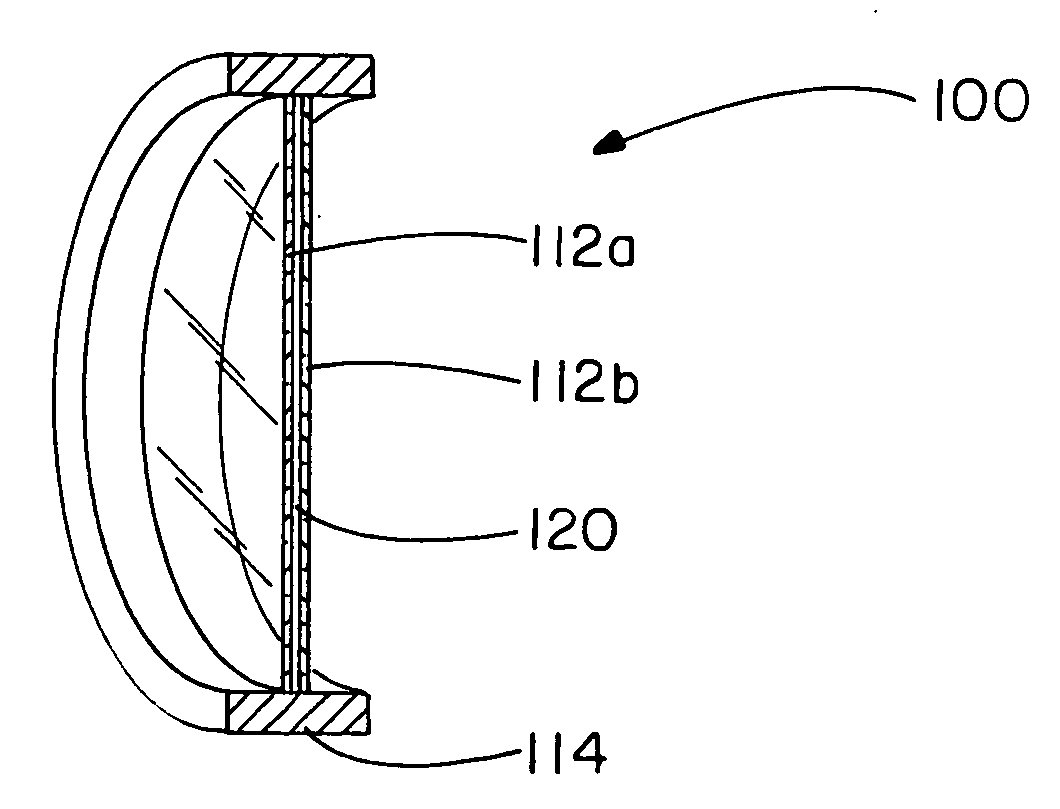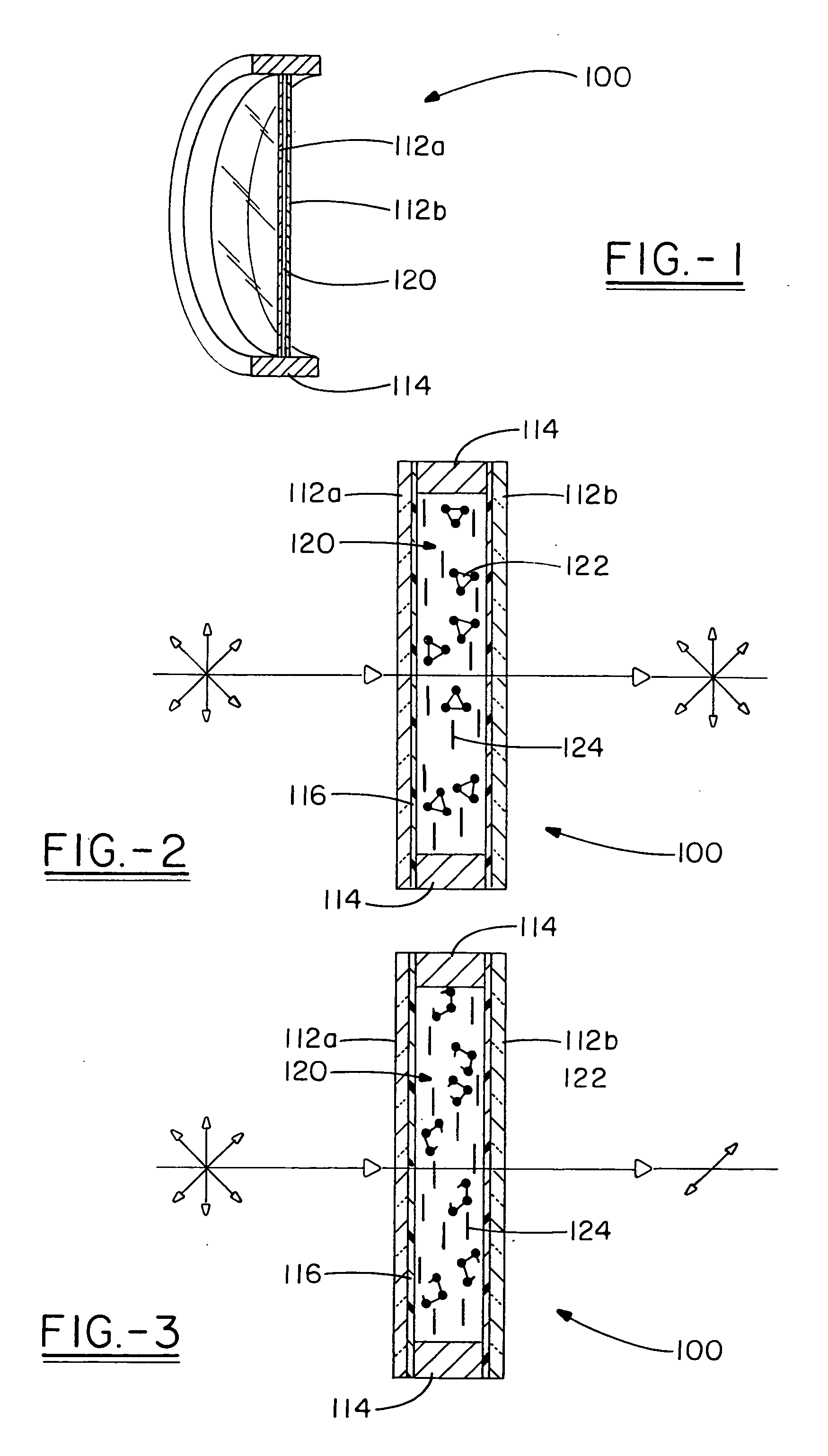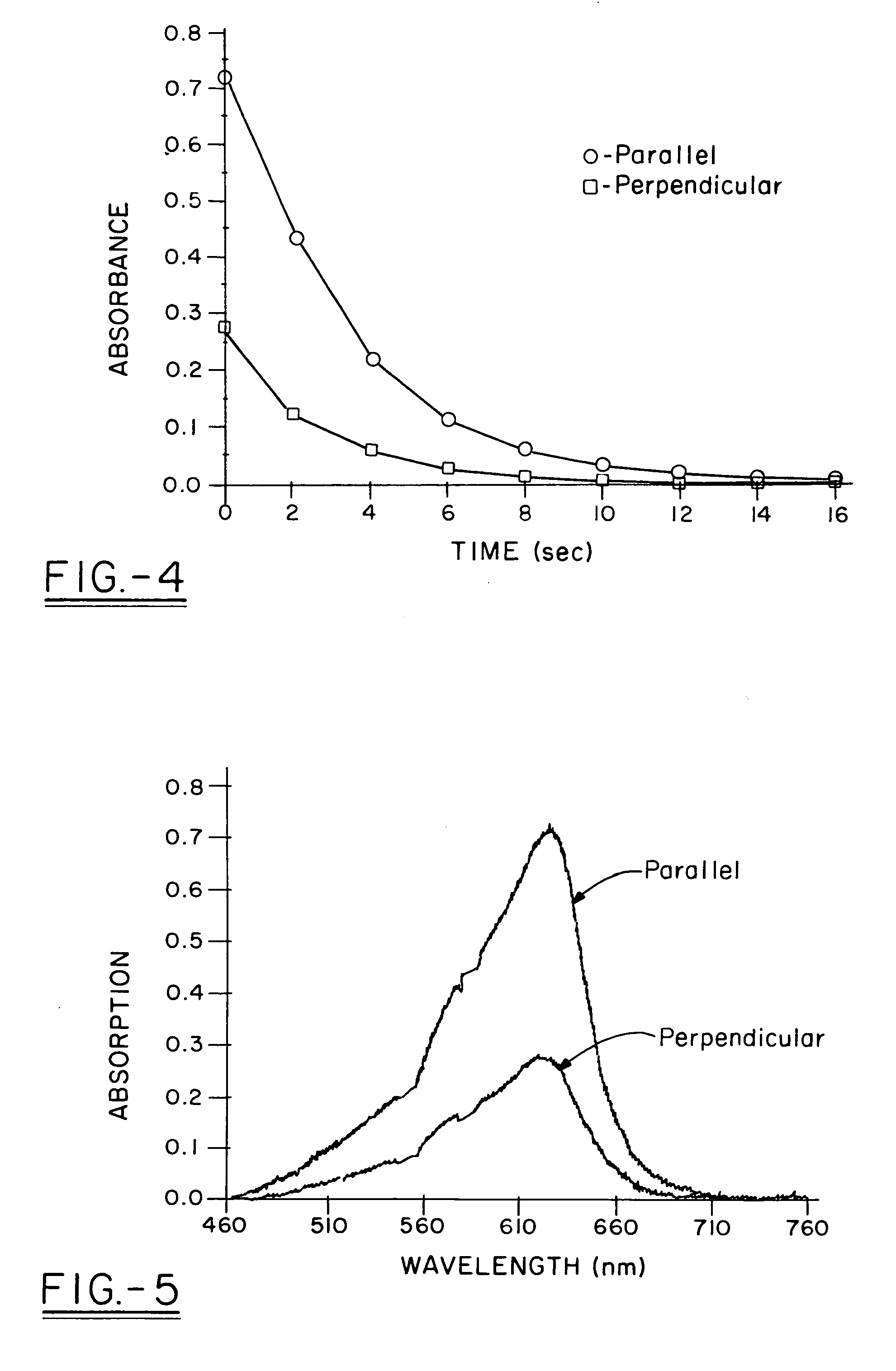Device exhibiting photo-induced dichroism for adaptive anti-glare vision protection
a technology of adaptive anti-glare and dichroism, applied in the field of devices exhibiting photoinduced dichroism for adaptive anti-glare vision protection, can solve the problems of reducing the degree to which the absorption change is completely controlled, reducing the safety of users, and rendering objects difficult to s
- Summary
- Abstract
- Description
- Claims
- Application Information
AI Technical Summary
Benefits of technology
Problems solved by technology
Method used
Image
Examples
example i
[0055] A combination of nematic liquid crystals and photochromic dyestuffs was obtained by mixing the nematic liquid crystal material manufactured by MERCK under the trade name E7, with a spiral spyropyran-based dye (Photosol 0265 manufactured by PPG Industries) at a concentration of 0.5 weight percentage dye to liquid crystal. This solution was confined between indium-tin-oxide coated parallel glass plates, separated by a distance of about 24 microns. The glass plates had previously been coated with polyimide coating (sold by DuPont under the trade name PI2555). The coating was applied according to the manufacturer's instructions and then unidirectionally buffed.
[0056] As best seen in FIG. 5, a graphical representation shows the absorption of light by the device for linearly polarized light with directions of polarization both parallel (the top curve) and perpendicular (the bottom curve) to the direction of average alignment of the nematic liquid crystal material. A skilled artisan...
PUM
| Property | Measurement | Unit |
|---|---|---|
| wavelength range | aaaaa | aaaaa |
| transmittance | aaaaa | aaaaa |
| photochromic | aaaaa | aaaaa |
Abstract
Description
Claims
Application Information
 Login to View More
Login to View More - R&D
- Intellectual Property
- Life Sciences
- Materials
- Tech Scout
- Unparalleled Data Quality
- Higher Quality Content
- 60% Fewer Hallucinations
Browse by: Latest US Patents, China's latest patents, Technical Efficacy Thesaurus, Application Domain, Technology Topic, Popular Technical Reports.
© 2025 PatSnap. All rights reserved.Legal|Privacy policy|Modern Slavery Act Transparency Statement|Sitemap|About US| Contact US: help@patsnap.com



